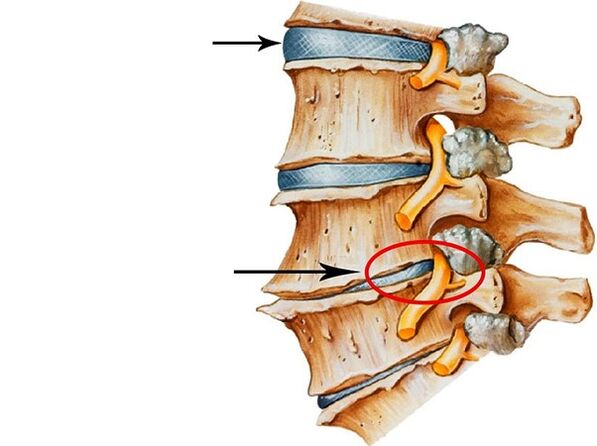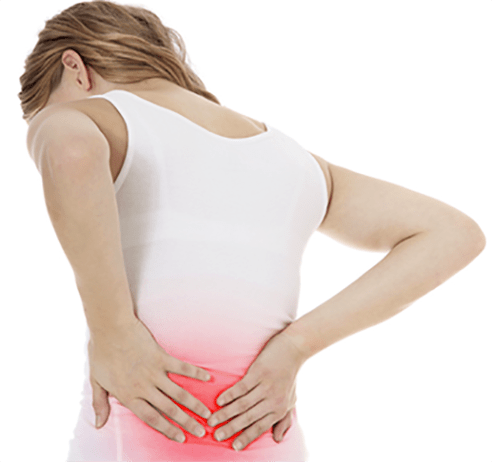Osteocondrosis is one of the most common pathologies of the spine.In this disease, the fabric of the cartilage of the spine and intervertebral column are influenced.Very often, osteochondrosis affects the lumbar region, since it is on it that the maximum load when walking, sit, find themselves and other activities.
If the treatment does not start over time, the disease can lead to root, intervertebral hernia, lumbago, isias, disabilities.
Development phase
The disease is generally divided into different phases:
- 1st stadium- There are small changes in the intervertebral discs, the spine is not deformed, a person feels a slight pain in the lower back.
- Phase 2- Pain in the affected area becomes stronger, violations in the intervertebral discs become more evident.
- Phase 3- There are intervertebral hernias, the spinal column is deformed.The patient feels severe pain in the affected area.
- 4th stadium- It becomes difficult for a person to walk and make movements.Pain occurs with slight movement.In this phase, the latter, the patient is given disability, as a rule.

Causes
Very often, people whose profession or type of activity are associated with physical effort and large loads on the lumbar department: manufacturers, removals, workers and athletes are subject to osteochondosis.In addition, the pathology can occur in teachers, cashiers, employees, as they spend most of the time in the sitting position.
There are many factors that influence the occurrence of osteochondrosis:
- Lack of physical effort, leading a sedentary lifestyle.
- Strong load on the lumbar region.
- Diseases of the joints and spine.
- Lesions of the lumbar column.
- Feet dishes or foot feet.
- Obesity.
- Poster disorders, bent.
- Scoliosis or kyphosis.
- Long -term hypothermia.
- Changes related to age in the spine.
- Genetic predisposition.
- Some internal diseases of cardiovascular, nervous and endocrine systems.
- Improper nutrition.
Symptoms
The main signs of osteochondosis of the lower back are:
- Severe painful pain in the lower back, sometimes give up the leg and intensifying when performing any movement, sneezing, cough, etc.
- Constant tension of the back muscles.
- The inability to straighten the rear after a long stay in the same position.
- Unpleasant sensations during the inclination or extension of the back.
- Lights in the lower back.
- Loss of sensitivity in buttocks, hips.
- Goosebumps, a sensation of tingling in the legs.
- Numbness of the legs and feet.
- The constant coldness of the feet and the feeling of cold in the legs.
- Varicose veins.
- Violation of power in men.
- Irregular menstruation in women.

The main symptom of the pathology is pain, when it is necessary to urgently consult a doctor.
Diagnostics
The diagnosis of osteochondosis begins with an in -depth examination of the patient and the collection of an anamnesis: the doctor asks the patient's cases of osteochondrosis in the genre, chronic diseases, lifestyle, type of activity, joint diseases and dorsal.
In addition, the specialist prescribes instrumental diagnostic methods, including:
- X -Rays of the lumbar region- It allows you to detect the presence of pathology and the degree of vertebral damage.
- Computerized tomography (CT)- A more accurate research method that allows you to determine damage to intervertebral discs, the degree of change, the degree of deformation of the spine.
- MRI- Allows you to carefully study intervertebral discs, provides information on minor disorders in the spine, is used in difficult cases or if the image image using the CT or X -Ray exam is not clear.
- Myelography- a type of diagnosis in which a contrast agent is used to detect intervertebral hernias.
Based on data, the specialist determines the degree of pathology and prescribes the necessary treatment.
Treatment
The treatment of osteocondrosis is carried out in a complete way.The necessary medicines and procedures are prescribed only by a doctor, rigorously individually.
First of all, the patient is prescribed a number of drugs based on fans -non -pound -shaped anti -anti -inflammatory flames that can alleviate inflammation and eliminate pain in the affected area.Condroprotectors are also prescribed: drugs that stop the process of destruction of cartilage and fabric of the feed cartilage.The vitamins that improve the conditions of the entire body are prescribed as additional medicines.
For many diseases of the spine, including osteochondrosis, physiotherapy is prescribed.The procedures are able to improve blood circulation to the injury, relieve tension from the muscles, eliminate pain and inflammation.With osteocondrosis, electrophoresis, acupuncture, magnetic therapy and other procedures are prescribed.
The patient is also prescribed massage, mud baths or hydrotherapy with which it is possible to relieve the tension and fatigue of the muscles, relax and improve blood flow.The muddy mud baths can eliminate the inflammatory process.
In the early stages of the disease, operating therapy is prescribed: a color gymnastics, whose performance help to restore the mobility of the spine, to strengthen the back muscles.At 3 and 4 phases of osteochondrosis, this type of treatment is not used.
The diet is very important in the treatment of the disease: it is necessary to include in dietary products rich in minerals: fruit, vegetables, porridge.Make sure to eat low fat meat, as it is rich in protein: it will be very useful to eat chicken or turkey meat.It will be useful to use latest latest products.It is recommended to reduce the quantity of fatty, sharp, smoked and fried dishes.It is important to observe the consumption mode: make sure you drink at least 1 liter of clean water per day.
With the osteochondrosis of the lumbar region, the treatment in a sanatorium will be useful, in which experts during the entire permanence of the patient will deal with the disease and the patient is constantly under the supervision of the doctors.
If conservative treatment methods do not help, the treatment surgical method is used.During the operation, the wheels or the cartilage concerned are replaced by a system.And if there is an intervertebral hernia, then it is removed.
Prevention
- Limit the load on the lower back.
- Do sports, do morning exercises.
- Eat well.
- Try to prevent lesions from the lumbar column.
- Avoid the hypothermia of the lower back.
- With a long place, change the position of the body more often, get up regularly and do simple exercises for warm or simply walking.
- Save a correct posture, don't bend down.
- In case of feet from clubs or flat feet, wear special orthopedic sunbeds that reduce the load on the spine.

















































